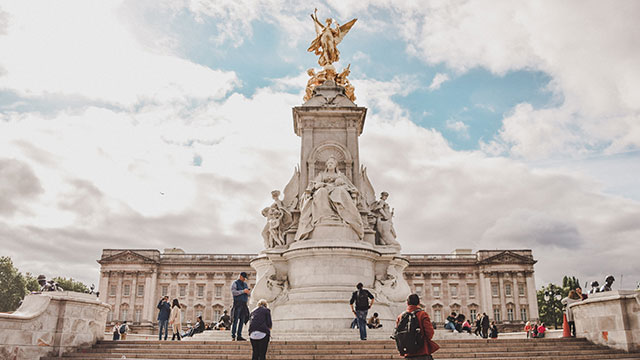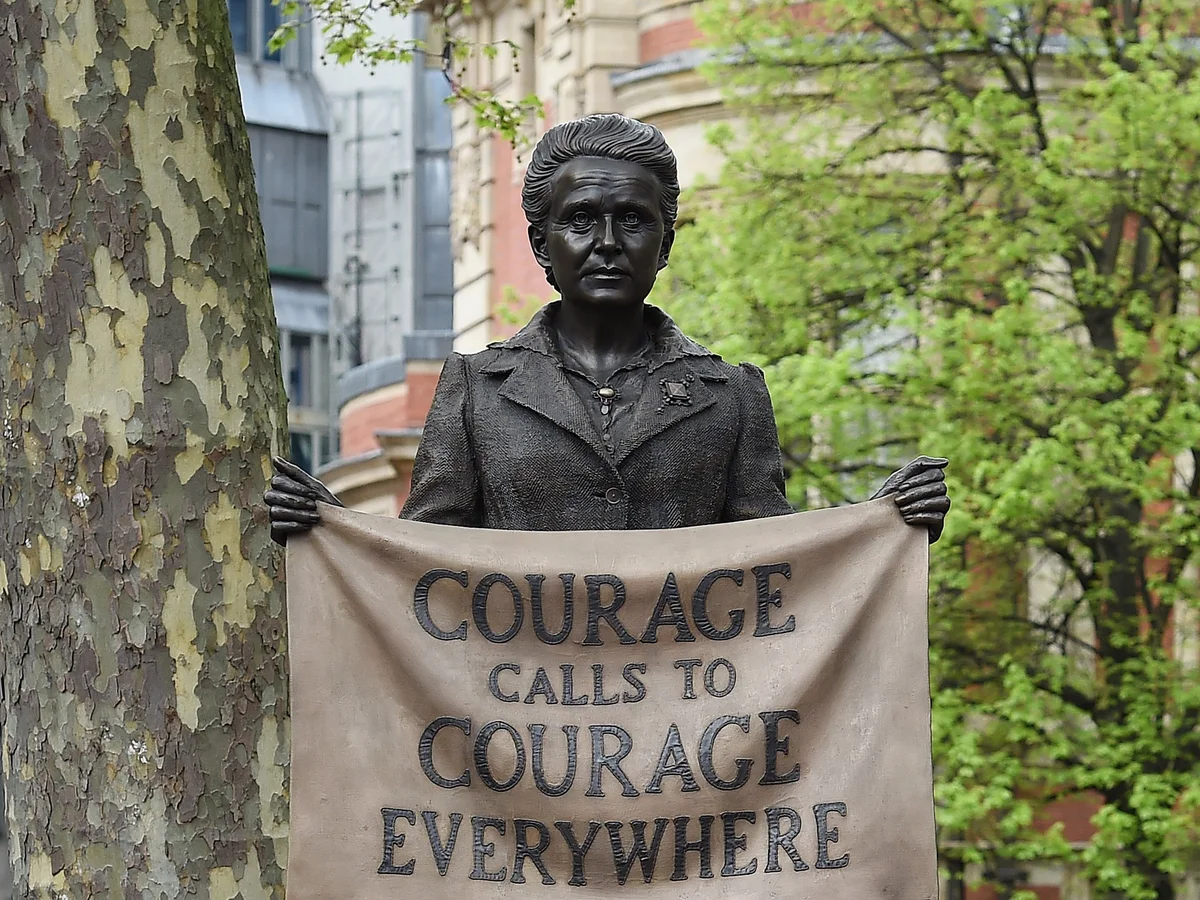The Millicent Fawcett statue in Parliament Square London has become one of the city’s most important cultural and historical landmarks. Unveiled in 2018, the statue was created to honour Dame Millicent Fawcett, a leading suffragist who dedicated her life to securing women’s right to vote in the United Kingdom. Unlike many monuments that focus on military or political leaders, this statue represents a social reformer whose courage changed the course of British democracy.
The presence of the Millicent Fawcett statue in Parliament Square is especially significant because it was the first monument of a woman ever placed in this prestigious location. Surrounded by figures such as Winston Churchill, Nelson Mandela, and Mahatma Gandhi, Fawcett’s statue not only balances representation but also reflects how society now recognises the struggles of women as equally pivotal in shaping the nation.
Who Was Dame Millicent Fawcett?
Dame Millicent Fawcett was born in 1847 and became a prominent leader of the women’s suffrage movement in Britain. Unlike the suffragettes led by Emmeline Pankhurst, Fawcett’s group, the National Union of Women’s Suffrage Societies (NUWSS), pursued a non-violent approach. Her belief in logical persuasion, steady campaigning, and the use of democratic processes distinguished her from more militant activists, while still driving significant progress.
Throughout her lifetime, Fawcett tirelessly fought for equal education, fair working conditions, and women’s access to professions. She believed that giving women the right to vote would create a more balanced and just society. Her contributions extended beyond politics, as she influenced policies that improved the daily lives of women and children. The Millicent Fawcett statue immortalises her efforts, ensuring her story is not forgotten in modern Britain.
The Millicent Fawcett Statue in Parliament Square
The Millicent Fawcett statue was designed by British artist Gillian Wearing and unveiled in April 2018 to mark the centenary of women winning the vote. Made of bronze and standing over eight feet tall, the statue depicts Fawcett holding a banner inscribed with her famous words: “Courage calls to courage everywhere.” This phrase was her tribute to fellow suffrage campaigner Emily Davison, who tragically died in the fight for equality.
Positioned among celebrated male leaders, the Millicent Fawcett statue challenges traditional narratives of power and history. Its unveiling was attended by political leaders, campaigners, and members of the public, with then Prime Minister Theresa May praising Fawcett’s lifelong dedication to justice. Today, the statue continues to inspire visitors and campaigners alike, serving as a beacon for gender equality and a reminder of the progress still to be made.
Location and Visiting the Statue in London

The Millicent Fawcett statue is located in Parliament Square Garden, Westminster, London, an area steeped in political and cultural history. The square is surrounded by world-renowned landmarks such as the Houses of Parliament, Westminster Abbey, and Big Ben. Its central position makes it one of the most visited public spaces in the capital, attracting both tourists and locals.
Visiting the statue is a moving experience for many. Parliament Square is open to the public 24 hours a day, allowing visitors to reflect on Fawcett’s legacy at any time. The statue has also become a key feature of walking tours in London, with guides often highlighting its historical significance and the story behind its creation. Whether seen in the quiet of the morning or amid the bustle of political protests, the Millicent Fawcett statue offers a moment of reflection.
Public Reactions and Controversies
The unveiling of the Millicent Fawcett statue was widely celebrated as a landmark moment in British history. Many applauded the fact that Parliament Square, which previously only honoured male leaders, now included a woman who had fought tirelessly for equal rights. The statue was seen as a symbol of progress, representing a more inclusive narrative of the nation’s past.
However, the monument has also faced challenges. On one occasion, the Millicent Fawcett statue was defaced, sparking outrage from the public and campaigners. This act of vandalism underscored the ongoing battles for gender equality and respect for women’s history. Despite the damage, the statue was swiftly restored, and the incident only served to strengthen its symbolic importance as a cultural and feminist landmark in London.
Millicent Fawcett Statue in Images and Media
Since its unveiling, the Millicent Fawcett statue has been widely covered in photographs, news reports, and academic studies. Images of the statue often feature prominently in media stories about women’s rights, education, and equality. For many, these photographs serve as a visual reminder of how far Britain has come in recognising the achievements of women.
The statue also plays a role in educational campaigns and cultural projects. Schools and universities use photos of the Millicent Fawcett statue to teach students about the history of the suffrage movement. Social media platforms have further amplified its message, as countless visitors share their images online, spreading awareness of Dame Millicent Fawcett’s legacy worldwide.
Other Statues and Monuments of Women’s Suffrage
While the Millicent Fawcett statue is the most prominent women’s suffrage monument in Parliament Square, it is part of a wider movement to honour female leaders. The Emmeline Pankhurst statue, located near the Houses of Parliament, commemorates another central figure in the fight for women’s votes. Together, these statues reflect the different strategies and sacrifices made to achieve a common goal.
By placing the Millicent Fawcett statue in such a prestigious location, Britain acknowledged the importance of peaceful activism as well as militant protest. It also set a precedent for recognising women’s contributions to society in public art. As more monuments to women are unveiled across the UK, the statue stands as a reminder that history must reflect the voices of all who shaped it.
Conclusion
The Millicent Fawcett statue is more than just a piece of bronze in Parliament Square; it is a lasting tribute to a woman whose courage and persistence changed the course of British democracy. It represents the struggles of countless suffragists who fought for justice, equality, and the right to participate fully in society.
Standing in one of the most visited spaces in London, the statue continues to inspire visitors, campaigners, and students alike. It serves as a constant reminder that progress is never given freely but earned through courage, dedication, and collective action. The Millicent Fawcett statue remains a symbol of how far we have come, and a call to continue striving for equality in the future.
FAQs
Where is the Millicent Fawcett statue located?
It is situated in Parliament Square Garden, Westminster, London.
When was the Millicent Fawcett statue unveiled?
The statue was unveiled in April 2018, marking the centenary of women’s suffrage.
Who created the Millicent Fawcett statue?
The statue was designed by British artist Gillian Wearing.
Why was the Millicent Fawcett statue defaced?
It was vandalised during a public incident, sparking outrage, but was quickly restored to its original state.
Can I take photos of the statue?
Yes, visitors are encouraged to take photos, as the statue is in a public square open day and night.
Also Read: pat gordon smith

